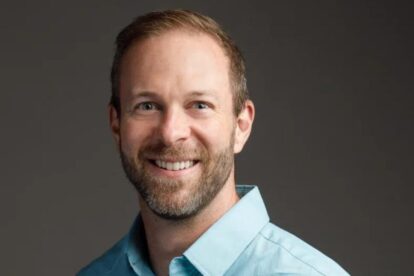Illusory Control: The Visibility of Eating Disorders in Men Rises As Diagnoses Increase

Steven weighed 280 lbs when he broke up with his girlfriend, Danielle, the woman he thought he was going to spend the rest of his life with. Despite multiple previous break-ups, two of which ended with Steven trying to kill himself, he imagined settling down with her on the fields of Saskatchewan, building a house, and starting a family. But by then her bulimia rendered her infertile and, worse still, created a distance between them that could no longer be bridged. Devastated and alone, he began to mirror Danielle’s purging, replicating her behavior as a way of coping with his pain and, in a strange way, keeping some remnant of her with him.
Steven had always had a weight problem, ever since he was a kid. Those extra pounds, he believed, were what was standing between him and happiness. While bulimia gave him a way to connect with Danielle, it also promised him something else; purging was a path to thinness and would finally lift the haze of discontentment that hovered over him. But bulimia turned out to be a hard secret to keep, requiring more work than he had bargained for, and he quickly came up with a better way: eating as little as possible. A few months after the break up he was eating fewer than 400 calories a day, usually consisting of “two rice cakes, two tablespoons of peanut butter, and one small banana.” Within a year and a half, he had lost 150 lbs. At 129 lbs and 5’ 9”, he still believed he was fat.
It wasn’t that Steven didn’t know he had a problem. He was painfully aware. But when he reached out to residential eating disorder facilities, he quickly found that none were willing to take men. And so Steven was left to struggle alone, retreating into a quiet and isolated life within the confines of his apartment, his anxiety about food making him reluctant to engage with the outside world. It wasn’t until his mother took photographs of him in a desperate attempt to show him how sick he truly was that he fully understood the gravity of the situation. Startled by his distorted appearance, he began forcing himself to eat a minimum of 2,200 calories each day, slowly moving his weight into the “healthy” category. Despite no longer looking the way you expect someone with anorexia to look, he still weighs his food. He still steps on the scale every night. But now he also goes to restaurants and gets excited about his recovery. And he also goes to therapy to understand why he’s so sad.
Begin Your Recovery Journey.
877-727-4343The Prevalence of Eating Disorders Amongst Men
Eating disorders are typically considered “girl diseases,” primarily affecting young, usually white, Western women on the cusp of adulthood. Many are surprised to learn that this understanding of the conditions in which eating disorders strike is a fairly recent development; as David Cox writes in The Guardian:
The first recorded case of anorexia was in 1649 when Richard Morton, a London physician, noted the symptoms of a young man. Morton described it as a ‘nervous consumption’ and continued to record cases throughout his life. His notes refer to a ‘wasting of the body without any remarkable fever, cough or shortness of breath’ and speculate on a link to the ‘cares and passions’ of the mind.
In recent years, the increasing visibility and, perhaps, prevalence of eating disorders amongst men have served as a stark reminder that these illnesses do not exist within the boundaries of one specific gender; since 2000, the number of men diagnosed with eating disorders has risen by 27% and men now represent approximately 30% of people with anorexia nervosa and bulimia nervosa, as well as nearly half of those with binge eating disorder. Because only about 10% of men with eating disorders seek treatment, the true number may be significantly higher.
The Universality of Pain
Part of the reason the mythology of eating disorders as a woman’s disorder persists is etiological confusion. Eating disorders, particularly anorexia and bulimia, are commonly understood as maladaptive reactions to aesthetic concerns; the nearly pathological idealization of thinness and cultural patrolling of women’s bodies have no male-targeted equivalents and, thus, it’s assumed that men should not be driven to participate in disordered eating. The fact that women are indeed often conditioned to live in a kind of body-focused panopticon is assumed to be enough to explain the prevalence of eating disorders amongst women and, logically speaking, it’s not an unfair assumption to make. It is, however, an inaccurate one. As Cox points out:
Anorexics themselves often reject the concept that their disorder has been triggered by the predominance of certain body types in magazines and adverts. Instead, it is a gradual process, where they slip into an addictive mindset of associating weight loss with both internal and external approval. This acts as a coping mechanism for some underlying trauma, which may range from the end of a relationship, bullying, loneliness, bereavement or general low self-esteem.
This understanding of eating disorders as an expression of and attempt to seek relief from very real and complex psychological distress illuminates why the illnesses slither across gender lines; emotional pain is universal and so too is the desire to escape it. Troy Roness, now a writer and eating disorders advocate, can clearly trace his own anorexia to the combined stressors of his parents’ divorce and leaving home for the first time at the age of 19. “[I didn’t have] the emotional skills to deal with traumatic events in my life,” he says. “When it comes to interactions with family and friends and your social circle, an eating disorder is a way to control things.” That sense of control, however, is illusory. As Benjamin O’Keefe, who has also struggled with anorexia, tells Salon, “[Not eating] started as such a conscious decision, but it was also something I couldn’t control. People die from this. I had to get to rock bottom before I saw how bad it was.”
Heightened Risk Amongst Gay and Bisexual Men
Despite the fact that these illnesses cross all manner of socioeconomic and cultural boundaries, gay and bisexual men in particular are at significantly heightened risk of developing an eating disorder. Today, 42% of men living with eating disorders self-identify as gay or bisexual and a full 15% of gay or bisexual men experience an eating disorder in their lifetimes. Some experts believe that this augmented risk is in part explained by the body-conscious and youth-obsessed culture within some parts of the gay community itself. Dr. Ilan Meyer, professor at Columbia University, says:
[The] theory is that the values and norms in the gay community promote a body-centered focus and high expectations about physical appearance so that, similar to what has been theorized about heterosexual women, they may feel pressure to maintain an ideal body image.
This pressure may indeed contribute to the development of eating disorders in some men. In a moving essay for The Advocate, Joseph Holtom writes, “I constantly worried about how I looked so I could maintain my ‘skinny’ identity, the eating disorder took over. Very early on after I came out, the community labeled me a ‘twink,’ which only perpetuated my obsession with my natural physical characteristic of having a small frame.” Dr. Meyer’s own research, however, suggests that “factors other than values and norms in the gay community are related to the higher rates of eating disorders among these men,” including the higher rates of depression and anxiety experienced by gay and bisexual men, internalized negative beliefs as the result of homophobia, and experiences of discrimination, bullying, rejection, and violence. Young men may be particularly at risk as the result of these experiential factors. “We know that gay and other sexual-minority kids are often under a lot of pressure,” says S. Bryn Austin, a professor at Harvard University. “This kind of isolation and victimization can take its toll on a person and one of ways it can play out is in vulnerability to eating-disorder symptoms and a host of other stress-related health problems.” As such, it may be that more gay and bisexual men look toward disordered eating to cope with distress because they have more distress to begin with.
Call for a Free Confidential Assessment.
877-727-4343Carpooling on the Road to Recovery
Men who are struggling with eating disorders often suffer in silence due to embarrassment and a sense of helplessness, allowing their illnesses to grow stronger as their bodies grow weaker. While women too often experience deep and painful shame surrounding their illnesses, eating disorders in men are so stigmatized and intimately tied to questions of masculinity that many are reluctant to seek the help they need to heal. Roness says:
There’s a lack of understanding and education around male eating disorders and the reasons behind that are shame and guilt. I think the notion of having an eating disorder as a male means that you believe you’re perceived as weaker and not able to take care of yourself. It’s hard to reach out and get help when it means that somebody is questioning their masculinity.
Eventually, however, Roness did reach out. Within a community of peers who understood his experience, he was not only able to begin his recovery, but realize that he wasn’t alone. “I was able to relate to straight men and gay men with the same issues, even a 40-something father of three. No matter sexual orientation, age, ethnicity, or socioeconomic status, these issues were a struggle for everybody.”
At Bridges to Recovery we understand the unique challenges faced by men who are living with eating disorders as the result of underlying psychological distress. Our comprehensive treatment program offers the highest level of care for both men and women to relieve you of your emotional pain and replace harmful coping mechanisms with healthy skills that will nurture your mind, body, and spirit. In the safety of our warm, welcoming therapeutic community, you are given the time, space, and resources to focus on your recovery and give voice to your struggles without fear of judgement or shaming. With the support of our highly skilled clinicians and compassionate peers, you can develop a more positive relationship with your physical self while also nourishing your psychological wellbeing to create true transformation.
“It’s important to reach out,” says O’Keefe. “There are people who are willing to carpool on the road to recovery. There’s help out there. There are people who want you to get better and be the best you that you can be. I realized that my life is bigger than a number on a scale. My life is meaningful.”
Bridges to Recovery offers comprehensive treatment for people living with mental health disorders as well as co-occurring eating disorders, substance abuse, and process disorders. Contact us to learn more about our innovative residential program and how we can help you or your loved one on the path to healing.






